- Home
- Richard Dawkins
Science in the Soul
Science in the Soul Read online
Copyright © 2017 by Richard Dawkins
Introductory material copyright © 2017 by Gillian Somerscales
All rights reserved.
Published in the United States by Random House, an imprint and division of Penguin Random House LLC, New York.
RANDOM HOUSE and the HOUSE colophon are registered trademarks of Penguin Random House LLC.
Published in the United Kingdom by Bantam Press, an imprint of Transworld Publishers, a Penguin Random House UK company.
Grateful acknowledgement is made to the following for permission to reprint previously published material:
HarperCollins Publishers: ‘Net Gain’ by Richard Dawkins from How Is the Internet Changing the Way You Think? edited by John Brockman, copyright © 2014 by Ed Foundation, Inc.; ‘Essentialism’ by Richard Dawkins from This Idea Must Die, edited by John Brockman, copyright © 2014 by Ed Foundation, Inc. Reprinted by permission of HarperCollins Publishers.
Vintage Books, an imprint of the Knopf Doubleday Publishing Group, a division of Penguin Random House LLC: ‘Intelligent Aliens’ by Richard Dawkins from Intelligent Thought: Science Versus the Intelligent Design Movement, edited by John Brockman, copyright © 2006 by John Brockman. Reprinted by permission of Vintage Books, an imprint of the Knopf Doubleday Publishing Group, a division of Penguin Random House LLC.
LIBRARY OF CONGRESS CATALOGING-IN-PUBLICATION DATA
Names: Dawkins, Richard, author. | Somerscales, Gillian, editor. Title: Science in the soul : selected writings of a passionate rationalist / Richard Dawkins ; edited by Gillian Somerscales.
Description: New York : Random House, [2017] | Includes bibliographical references and index.
Identifiers: LCCN 2017025118| ISBN 9780399592249 (hardback) | ISBN 9780399592256 (ebook)
Subjects: LCSH: Science–Philosophy. | BISAC: SCIENCE / Essays. | SCIENCE / Life Sciences / Evolution. | SCIENCE / Philosophy & Social Aspects.
Classification: LCC Q175 .D325 2017 | DDC 500—dc23 LC record available at https://lccn.loc.gov/2017025118
Ebook ISBN 9780399592256
randomhousebooks.com
Cover design: Jamie Keenan
v4.1
ep
Contents
Cover
Title Page
Copyright
Author’s Introduction
Editor’s Introduction
Part I: The Value(s) of Science
The Values of Science and the Science of Values
Speaking Up for Science: An Open Letter to Prince Charles
Science and Sensibility
Dolittle and Darwin
Part II: All Its Merciless Glory
‘More Darwinian Than Darwin’: The Darwin–Wallace Papers
Universal Darwinism
An Ecology of Replicators
Twelve Misunderstandings of Kin Selection
Part III: Future Conditional
Net Gain
Intelligent Aliens
Searching Under the Lamp-Post
Fifty Years on: Killing the Soul?
Part IV: Mind Control, Mischief and Muddle
The ‘Alabama Insert’
The Guided Missiles of 9/11
The Theology of the Tsunami
Merry Christmas, Prime Minister!
The Science of Religion
Is Science a Religion?
Atheists for Jesus
Part V: Living in the Real World
The Dead Hand of Plato
‘Beyond Reasonable Doubt’?
But Can They Suffer?
I Love Fireworks, But…
Who Would Rally Against Reason?
In Praise of Subtitles; or, a Drubbing for Dubbing
If I Ruled the World…
Part VI: The Sacred Truth of Nature
About Time
The Giant Tortoise’s Tale: Islands Within Islands
The Sea Turtle’s Tale: There and Back Again (and Again?)
Farewell to a Digerati Dreamer
Part VII: Laughing at Live Dragons
Fundraising for Faith
The Great Bus Mystery
Jarvis and the Family Tree
Gerin Oil
Sage Elder Statesman of the Dinosaur Fancy
Athorism: Let’s Hope It’s a Lasting Vogue
Dawkins’ Laws
Part VIII: No Man Is an Island
Memories of a Maestro
O My Beloved Father: John Dawkins, 1915–2010
More Than My Uncle: A. F. ‘Bill’ Dawkins, 1916–2009
Honouring Hitch
Dedication
Sources and Acknowledgements
Bibliography
Also by Richard Dawkins
About the Author
Author’s introduction
I AM WRITING THIS two days after a breathtaking visit to Arizona’s Grand Canyon (‘breathtaking’ still hasn’t gone the way of ‘awesome’ although I fear it may). To many Native American tribes the Grand Canyon is a sacred place: site of numerous origin myths from the Havasupai to the Zuni; hushed repose of the Hopi dead. If I were forced to choose a religion, that’s the kind of religion I could go for. The Grand Canyon confers stature on a religion, outclassing the petty smallness of the Abrahamics, the three squabbling cults which, through historical accident, still afflict the world.
In the dark night I walked out along the south rim of the canyon, lay down on a low wall and gazed up at the Milky Way. I was looking back in time, witnessing a scene from a hundred thousand years ago – for that is when the light set out on its long quest to dive through my pupils and spark my retinas. At dawn the following morning I returned to the spot, shuddered with vertigo as I realized where I had been lying in the dark, and looked down towards the canyon’s floor. Again I was gazing into the past, two billion years in this case, back to a time when only microbes stirred sightless beneath the Milky Way. If Hopi souls were sleeping in that majestic hush they were joined by the rockbound ghosts of trilobites and crinoids, brachiopods and belemnites, ammonites, even dinosaurs.
Was there some point in the mile-long evolutionary progression up the canyon’s strata when something you could call a ‘soul’ sprang into existence, like a light suddenly switched on? Or did ‘the soul’ creep stealthily into the world: a dim thousandth of a soul in a pulsating tube-worm, a tenth of a soul in a coelacanth, half a soul in a tarsier, then a typical human soul, eventually a soul on the scale of a Beethoven or a Mandela? Or is it just silly to speak of souls at all?
Not silly if you mean something like an overwhelming sense of subjective, personal identity. Each one of us knows we possess it even if, as many modern thinkers aver, it is an illusion – an illusion constructed, as Darwinians might speculate, because a coherent agency of singular purpose helps us to survive.
Visual illusions such as the Necker Cube—
—or the Penrose Impossible Triangle—
—or the Hollow Mask illusion demonstrate that the ‘reality’ we see consists of constrained models constructed in the brain. The Necker Cube’s two-dimensional pattern of lines on paper is compatible with two alternative constructions of a three-dimensional cube, and the brain adopts the two models in turn: the alternation is palpable and its frequency can even be measured. The Penrose Triangle’s lines on paper are incompatible with any real-world object. These illusions tease the brain’s model-construction software, thereby revealing its existence.
In the same way, the brain constructs in software the useful illusion of personal identity, an ‘I’ apparently residing just behind the eyes, an ‘agent’ taking decisions by free will, a unitary personality, seeking goals and feeling emotions. The construction of personhood takes place progressively in early childhood, perhaps by t
he joining up of previously disparate fragments. Some psychological disorders are interpreted as ‘split personality’, failure of the fragments to unite. It’s a not unreasonable speculation that the progressive growth of consciousness in the infant mirrors a similar progression over the longer timescale of evolution. Does a fish, say, have a rudimentary feeling of conscious personhood, on something like the same level as a human baby?
We can speculate on the evolution of the soul, but only if we use the word to mean something like the constructed internal model of a ‘self’. Things are very different if, by ‘soul’, we mean a spook that survives bodily death. Personal identity is an emergent consequence of material brain activity and it must disintegrate, eventually reverting to its pre-birth nothingness, when the brain decays. But there are poetic usages of ‘soul’ and related words that I am unashamed to embrace. In an essay published in my earlier anthology A Devil’s Chaplain, I deployed such words to extol a great teacher, F. W. Sanderson, headmaster of my old school before I was born. Notwithstanding the ever-present risk of misunderstanding, I wrote of the ‘spirit’ and the ‘ghost’ of the dead Sanderson:
His spirit lived on at Oundle. His immediate successor, Kenneth Fisher, was chairing a staff meeting when there was a timid knock on the door and a small boy came in: ‘Please, sir, there are Black Terns down by the river.’ ‘This can wait,’ said Fisher decisively to the assembled committee. He rose from the Chair, seized his binoculars from the door and cycled off in the company of the small ornithologist, and – one can’t help imagining – with the benign, ruddy-faced ghost of Sanderson beaming in their wake.
I went on to refer to the ‘shade’ of Sanderson, after describing another scene, from my own education, when an inspiring science teacher, Ioan Thomas (who came to the school because he admired Sanderson although he was too young to have met him) dramatically taught us the value of admitting ignorance. He asked us, one by one, a question to which we all wildly guessed answers. Finally, our curiosity aroused, we clamoured (‘Sir! Sir!’) for the true answer. Mr Thomas waited dramatically for silence and then spoke slowly and distinctly, pausing for effect between each word. ‘I don’t know! I…don’t…know!’
Again the fatherly shade of Sanderson chuckled in the corner, and none of us will have forgotten that lesson. What matters is not the facts but how you discover and think about them: education in the true sense, very different from today’s assessment-mad exam culture.
Was there a risk that readers of my earlier essay might misunderstand that ‘spirit’ of Sanderson ‘living on’; his benign, ruddy-faced ‘ghost’ beaming; or his ‘shade’ chuckling in the corner? I don’t think so, although, God knows (there we go again), there’s enough eager appetite for misunderstanding out there.
I have to recognize that the same risk, born of the same eagerness, stalks this volume’s title. Science in the Soul. What does it mean?
Let me sidestep before attempting to answer. I think it’s high time the Nobel Prize for Literature was awarded to a scientist. I’m sorry to say the nearest precedent is a very poor example: Henri Bergson, more of a mystic than a true scientist, whose vitalistic élan vital was lampooned in Julian Huxley’s satirical railway train propelled by élan locomotif. But seriously, why not a real scientist for the Literature prize? Although, alas, he is no longer with us to receive it, who would deny that Carl Sagan’s writing is of Nobel literary quality, up there with the great novelists, historians and poets? How about Loren Eiseley? Lewis Thomas? Peter Medawar? Stephen Jay Gould? Jacob Bronowski? D’Arcy Thompson?
Whatever the merits of individual authors whom we might name, isn’t science itself a worthy subject for the best writers, more than capable of inspiring great literature? And whatever the qualities are that make science so – those same qualities that make for great poetry and Nobel-winning novels – don’t we have here a good approach to the meaning of ‘soul’?
‘Spiritual’ is another word that could be used to describe Saganesque literary science. It is widely thought that physicists are more likely to self-identify as religious than biologists. There’s even statistical evidence of this from the Fellows of both the Royal Society of London and the US National Academy of Sciences. But experience suggests that if you probe these elite scientists further you’ll find that even the 10 per cent who profess some kind of religiosity have, in most cases, no supernatural beliefs, no god, no creator, no aspiration to an afterlife. What they do have – and they’ll say so if pressed – is a ‘spiritual’ awareness. They may be fond of the hackneyed phrase ‘awe and wonder’, and who can blame them? They may quote, as I do in these pages, the Indian astrophysicist Subrahmanyan Chandrasekhar ‘shuddering before the beautiful’, or the American physicist John Archibald Wheeler:
Behind it all is surely an idea so simple, so beautiful, that when we grasp it – in a decade, a century, or a millennium – we will all say to each other, how could it have been otherwise? How could we have been so blind?
Einstein himself made it very clear that, though spiritual, he believed in no kind of personal god.
It was, of course, a lie what you read about my religious convictions, a lie which is being systematically repeated. I do not believe in a personal God and I have never denied this but have expressed it clearly. If something is in me which can be called religious then it is the unbounded admiration for the structure of the world so far as our science can reveal it.
And on another occasion:
I am a deeply religious nonbeliever – this is a somewhat new kind of religion.
Though I wouldn’t use the exact phrase, it is in this sense of a ‘deeply religious nonbeliever’ that I consider myself a ‘spiritual’ person, and it is in this sense that I unapologetically use ‘soul’ in the title of this book.
Science is both wonderful and necessary. Wonderful for the soul – in contemplation, say, of deep space and deep time from the rim of the Grand Canyon. But also necessary: for society, for our well-being, for our short-term and long-term future. And both aspects are represented in this anthology.
I’ve been a science educator all my adult life, and most of the essays collected here stem from the years when I was the inaugural Charles Simonyi Professor of the Public Understanding of Science. When promoting science, I’ve long been an advocate of what I call the Carl Sagan school of thought: the visionary, poetic side of science, science to stir the imagination, as opposed to the ‘non-stick frying pan’ school of thought. By the latter I mean the tendency to justify the expense of, for example, space exploration by reference to spin-offs such as the non-stick frying pan – a tendency I have compared to an attempt to justify music as good exercise for the violinist’s right arm. It’s cheap and demeaning, and I suppose my satirical description could be accused of exaggerating the cheapness. But I still use it to express my preference for the romance of science. To justify space exploration I would rather invoke what Arthur C. Clarke extolled and John Wyndham named as ‘the outward urge’, the modern version of the urge that drove Magellan, Columbus and Vasco da Gama to exploring the unknown. But yes, ‘non-stick frying pan’ is unfairly demeaning to the school of thought that it labels in my shorthand; and it is to the serious, practical value of science in our society that I now turn, for that is what many of the essays in this book are about. Science really matters for life – and by ‘science’ I mean not just scientific facts, but the scientific way of thinking.
I write this in November 2016, bleak month in a bleak year when the phrase ‘barbarians at the gates’ tempts without irony. Within the gates, rather, for the calamities that have struck the two most populous nations in the English-speaking world in 2016 are self-inflicted: wounds dealt not by an earthquake or a military coup d’état but by the democratic process itself. More than ever, reason needs to take centre stage.
Far be it from me to devalue emotion – I love music, literature, poetry and the warmth, both mental and physical, of human affection – but emotion should know its place. Po
litical decisions, decisions of state, policies for the future, should flow from clear-thinking, rational consideration of all the options, the evidence bearing upon them, and their likely consequences. Gut feelings, even when they don’t arise from the stirred dark waters of xenophobia, misogyny or other blind prejudice, should stay out of the voting booth. For some time now, such murky emotions have remained largely under the surface. But in 2016 political campaigns on both sides of the Atlantic brought them into the open, made them, if not respectable, at least freely expressed. Demagogues led by example and proclaimed open season for prejudices which had for half a century been shamed into hole-in-corner secrecy.
Whatever may be the innermost feelings of individual scientists, science itself works by rigorous adherence to objective values. There is objective truth out there and it is our business to find it. Science has in place disciplined precautions against personal bias, confirmation bias, prejudgement of issues before the facts are in. Experiments are repeated, double-blind trials exclude the pardonable desires of scientists to be proved right – and the more laudable bending over backwards to maximize our opportunity to be proved wrong. An experiment done in New York can be replicated by a lab in New Delhi and we expect the conclusion to be the same regardless of geography or the cultural or historic biases of the scientists. Would that other academic disciplines such as theology could say the same. Philosophers happily speak of ‘continental philosophy’ as opposed to ‘analytical philosophy’. Philosophy departments in American or British universities might seek a new appointment to ‘cover the continental tradition’. Can you imagine a science department advertising for a new professor to cover ‘continental chemistry’? Or ‘the Eastern tradition in biology’? The very idea is a bad joke. That says something about the values of science and is not kind to those of philosophy.

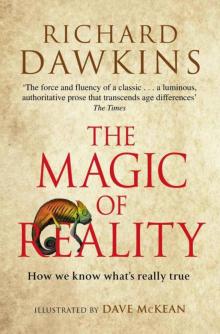 The Magic of Reality
The Magic of Reality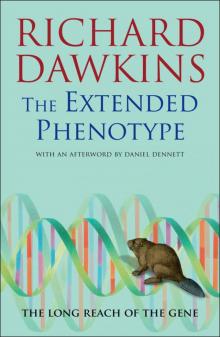 The Extended Phenotype
The Extended Phenotype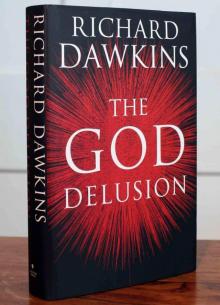 The God Delusion
The God Delusion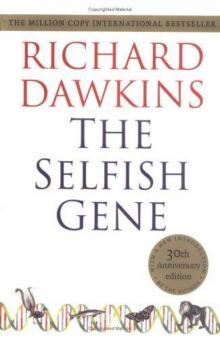 The Selfish Gene
The Selfish Gene The Blind Watchmaker
The Blind Watchmaker The Greatest Show on Earth
The Greatest Show on Earth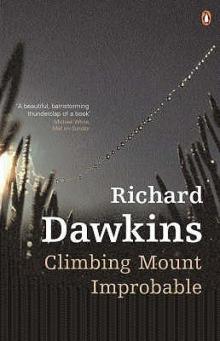 Climbing Mount Improbable
Climbing Mount Improbable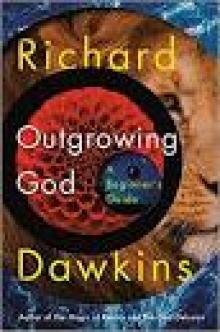 Outgrowing God
Outgrowing God Brief Candle in the Dark
Brief Candle in the Dark The Greatest Show on Earth: The Evidence for Evolution
The Greatest Show on Earth: The Evidence for Evolution Science in the Soul
Science in the Soul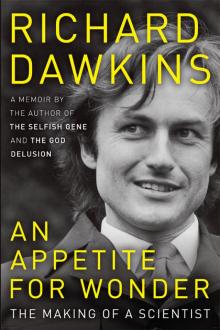 An Appetite for Wonder
An Appetite for Wonder